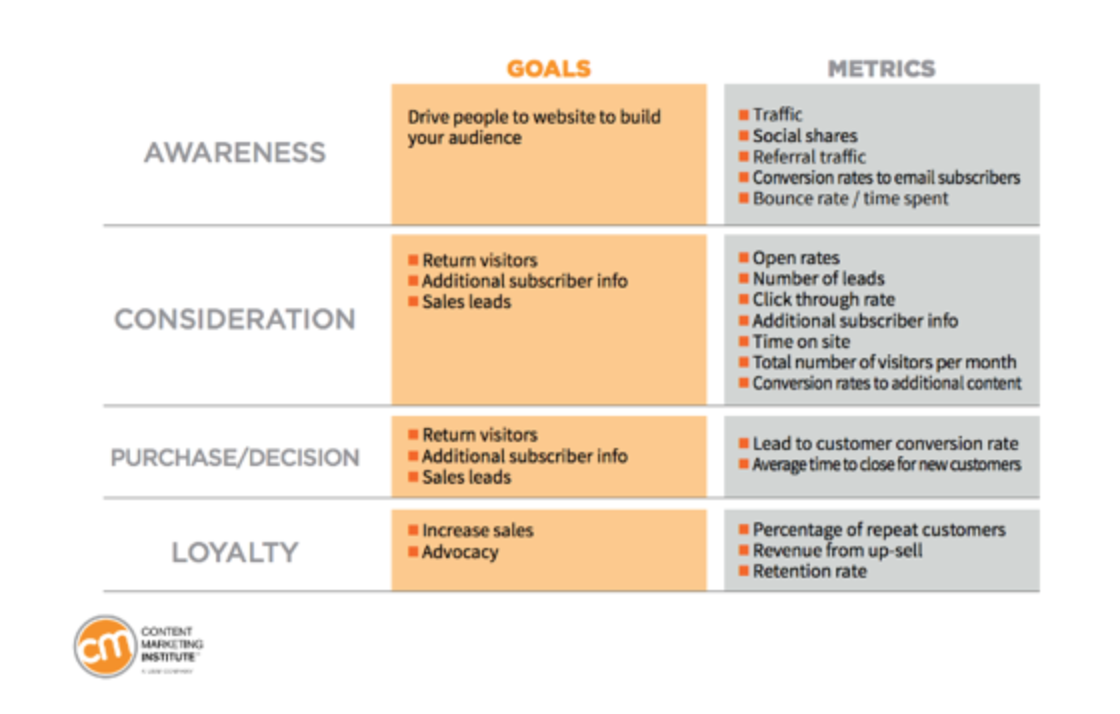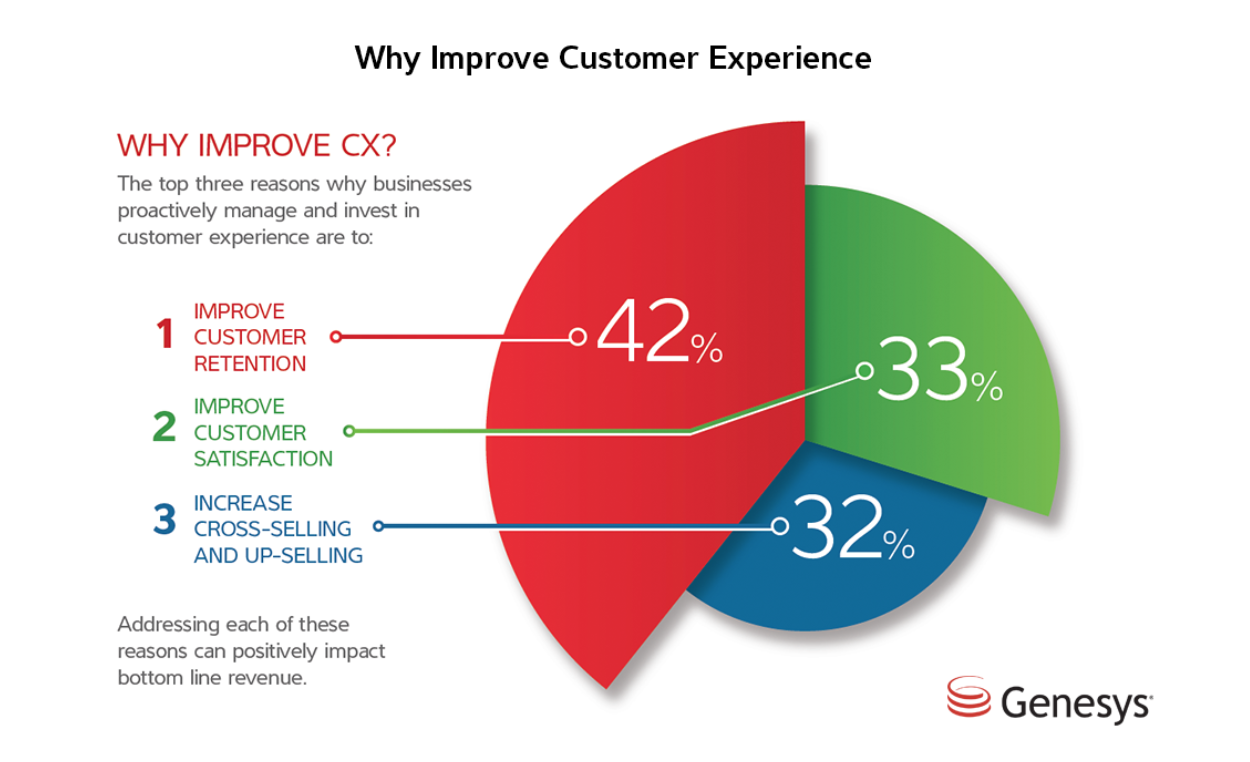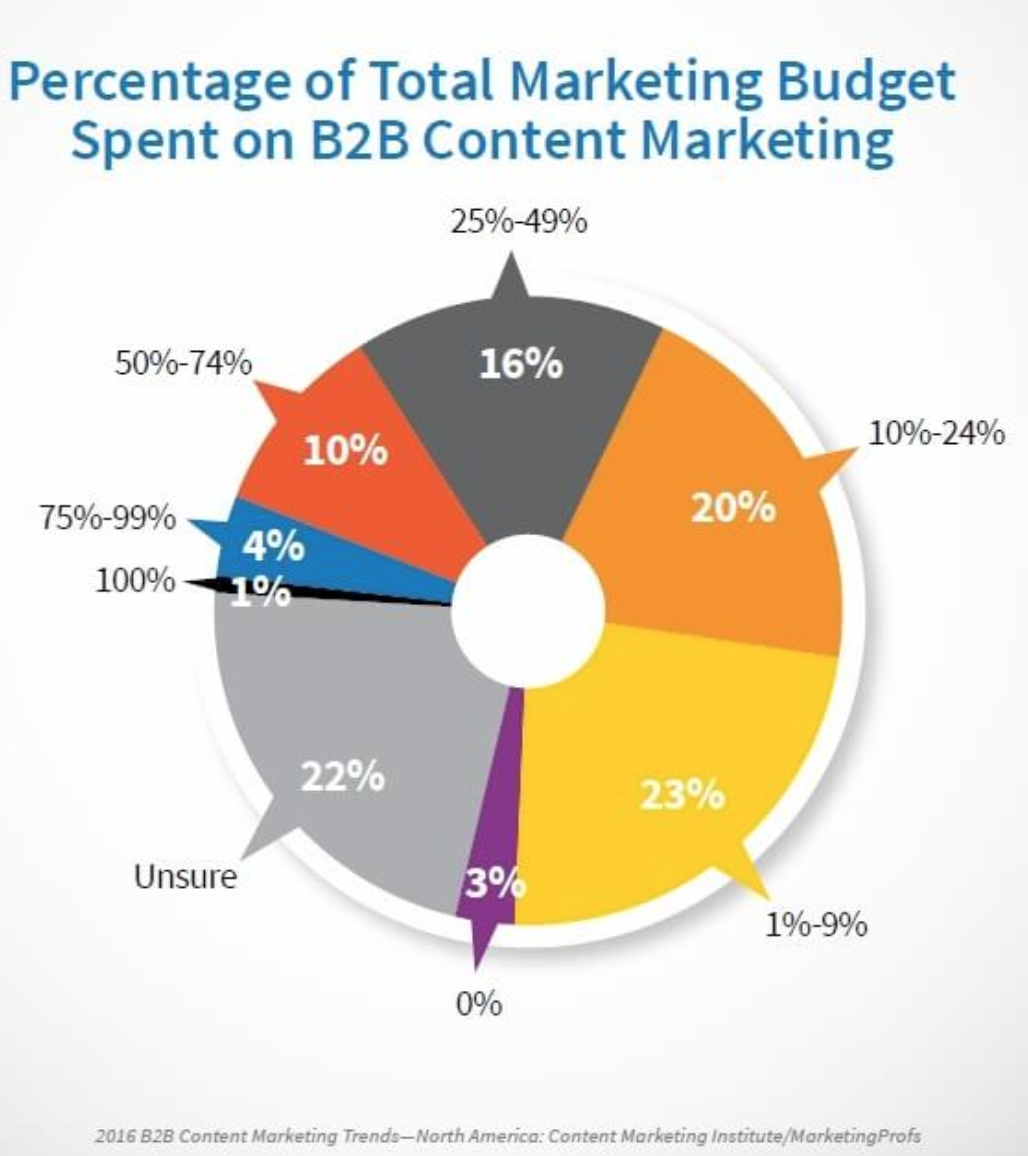Whenever content marketers ask for a bigger budget, there’s inevitably the same response: “Show me the money.” Sounds like a flashback to Jerry Maguire, but proving ROI to leadership is very real. While the marketing team is used to thinking of content as an investment, the C-suite needs more convincing.
Let’s think about ROI in terms everyone can understand: coffee. (Or, if you’re one of the few hold outs, tea.)
You have two options: a 50¢ cup of bitter coffee that’s been burned or a $5 cup of heavenly goodness. What’s your choice?
The rise of all those hip coffee shops (of arguable coffee quality, admittedly) suggests that most consumers will take the 900% markup.
But where’s the ROI? What about your experience was worth the extra $4.50?
Similarly, how can you demonstrate that a greater content marketing budget and headcount will allow you to drive revenue?
Start by showing leadership that content marketing is a valuable asset, not a cost center. This requires a shift of perspective that treats content like an investment instead of an expense. After all, your brand value is an investment—and content directly contributes to that value.
Much like the $5 cup of coffee, content provides an experience that contributes real value to the customer journey. Perhaps difficult to quantify, but necessary to address when asking for more marketing budget.
“If marketing wants to be taken seriously, we need to embrace revenue responsibility and measure the sales and revenue impact of our efforts first and foremost.” – Matt Heinz, President, Heinz Marketing
Yes, evaluating and presenting how content creates revenue is critical to getting that budget bump. Unfortunately, our latest benchmark report found that 54% of B2B marketers consider proving the ROI of content to be one of the greatest obstacles to success.
Here are six tips that will help you make the case for a greater headcount and higher content marketing budget. Use them to articulate the value of your content and reposition it as a crucial business asset.
1. Engage the Funnel—Don’t Just Fill It
If your marketing funnel is flush with quality leads, making the case for a budget increase is much easier. Attracting the greatest volume of qualified leads requires that you create a stream of engaging full-funnel content.
With that said, don’t fall into a trap of overfilling the funnel with leads that are of lower quality or don’t quite fit your ICP. Follow best practices by ensuring your content is highly targeted to specific personas that will actually have a reason to make it further down the funnel.
For the best results, these useful assets should span the customer journey without coverage gaps.

These days, content has a long shelf life, and you need to produce comprehensive assets to really catch readers’ attention. For example, evergreen content sustains engagement over time because it remains relevant. A library of ageless and valuable resources will confer a great deal of confidence upon your content operation.
Check in on content quality by studying engagement metrics like bounce rate, page views, pages per session, and average session duration. Low numbers indicate poorly aligned or thin content that needs to be retuned to the needs of your audience.
Maximizing the quality of your content is the first step in showing that marketing pulls its weight and pulls leads down the funnel.
2. Prove Your ROI with Revenue Marketing
Marketers without processes in place to identify the ROI of their efforts can only suggest their impact. A revenue-driven approach is needed to prove the real value of your content operation.
In our recent benchmark report, we found:
- 25% of marketers don’t set marketing revenue goals
- 87% use web traffic to assess ROI (a vanity metric)
- 86% use time on page to assess ROI (also a vanity metric)
Vanity metrics won’t help you attribute revenue, improve performance and funnel conversions, or show the ROI of content. For that, you need revenue metrics. Using KPIs like conversion rates, the number of leads created, lead quality, and revenue driven by marketing leads will help you ground your budget with measurable results. Putting ROI first is the difference between a winning proposal and a budget migraine.

(Source)
Use these metrics to assess your prior campaigns and eliminate what didn’t meet your ROI expectations. Provide a rationale for these cuts during your proposal for more budget. This will add credibility to your budget request and indicate that you’re critical of results and serious about revenue.
3. Upgrade from Content Marketing to a Content Operation
Though salespeople might hesitate to admit they need any help, both marketing and sales use content to drive revenue. You’ll strengthen your request by demonstrating how sales and customer experience will benefit from a budget increase.
According to Walker, customer experience will surpass both price and product as the key differentiator between brands by 2020. (People want the $5 cup of coffee heaven, folks). Since customer experience defies silos and hinges upon seamless asset delivery, you can integrate and improve your content strategy by switching to a content operation.
So, what is a content operation?
A content operation is a set of processes, people, and technologies for strategically planning, producing, distributing, and analyzing content.
When properly implemented, it unifies the customer experience across all departments and channels. This allows marketers to focus on authentic, resonant messaging that drives revenue and growth.
Every department can agree that a fluid customer experience drives revenue more effectively than the disjointed alternative. As seen below, an improved customer experience impacts revenue by way of upsells and cross-sells, but it also improved customer satisfaction and retention.

(Source)
Unifying the customer experience translates to equalizing each team’s access to content. Cross-team collaboration works to increase the visibility of assets, which helps enhance the efficiency, productivity, and impact of both departments. A bit of synergy does everybody good.
However, a survey by Illumina found that only 20% of salespeople were satisfied with the findability of the assets needed to enable a sale. When salespeople can find the perfect piece of content, it allows them to make better use of allocated resources and deliver the most relevant content to customers. A content operation shows executives how essential readily-accessible content is to the customer experience, sales enablement, and the bottom line.
4. Align with Sales
Before taking your budget plan to the CFO, run it by sales. Rather than engaging with the rivalry, find common ground and talk about ROI. Ask them how marketing can help them reach their sales goals, as well as how they’re using assets to enable sales. Illustrate how crucial your plan is to hitting next year’s numbers. Then discuss the ways content is best used to promote sales before reaching an agreement.
If you approach the CFO with a joint consensus about how necessary these efforts are to hit goals, justifying your budget increase will be smooth sailing by comparison. Applying for cross-functional benefits will reinforce your case, especially with sales behind you.
5. Set Revenue Goals
Look at the yearly revenue target and pledge to deliver a percentage. This is the tested principle of ‘give to get’ in action. Whatever you choose to contribute, back up your hypothesis with metrics and prior campaign results.

(Source)
For example, you might plan to create more infographics to attract qualified leads. How have these initiatives performed in the past? Support your initiative by looking into last year’s marketing and calculate the ROI for each program. Do you lack the concrete data? Ask sales or a data analyst.
If you’re unaccustomed to being accountable for sales numbers, this can be intimidating. However, committing to a goal shows the CMO that you’re confident in your plan and working from a revenue-driven approach.
6. Speak to Business Objectives
You’re a marketer, right? So don’t forget to appeal to your audience! Organize your proposal around the pain points of the C-suite. Step away from marketing goals for a minute and align your plan with the overall goals of the business. If it helps, imagine the executives as customers with matching personas.
What are your revenue targets next year? How will each initiative affect sales, customer retention, margin, or other key business metrics?
Addressing results in terms of revenue will ensure that your points resonate. Using executive-level language will catch the CFO’s attention, plus show that you’re a strategic leader who can operate with the bigger picture in mind.
Marketing for ROI
Marketing is often called a soft science—yet the bottom line is a hard fact: To convince the leadership that your content operation deserves more budget, surface the proof.
Dig into the metrics that matter and evaluate your past campaigns with a critical eye. Slash what didn’t work while working to improve overall content quality. Discuss ROI with sales and rally their support for your plan. This will help you demonstrate how high-quality content is a necessary investment in your brand—and worth every penny.
Good luck preparing your own case for more budget—we’re deep believers that content deserves investment. Plus, your budget presentation would make a great opportunity to tell our 50¢ vs. $5 coffee ROI story (with the coffee as a prop, of course).


